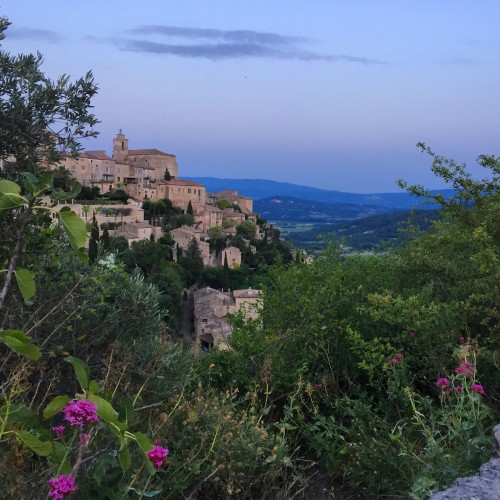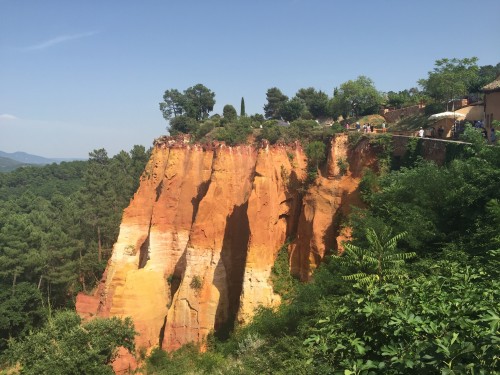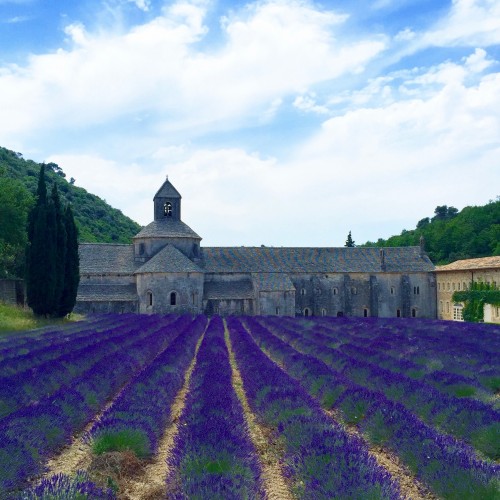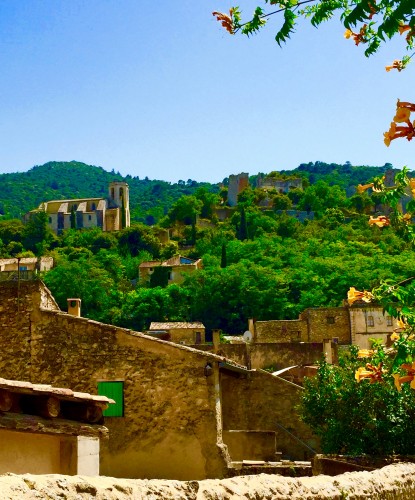A trip to Provence, where French living is at its finest, has been on my bucket list for many years. From California, it’s not such an easy trek, and that’s one reason it took me decades to finally get there. This famous section of southeastern France (formally called the Provence-Alpes-Côte d’Azur region), hugs the Mediterranean, and is best known for the French Riviera and jet-set destinations such as Cannes, Nice and Saint-Tropez.
Less known in the U.S. and elsewhere in the world is the Luberon, a part of Provence made up of picturesque medieval villages, and hills and valleys spanning some 600km. Vineyards and wineries are in abundance, and if you visit at the right time of year, you’ll see sunflowers and lavender providing brilliant color all along the roadways.

The beautiful Senanque Abbey, set among rows of lavender, is what drew me to the Luberon. As a child, I had seen pictures of the iconic abbey–and those images stayed with me for many years. Fortunately, experiencing the abbey in real life did not disappoint. From the contrast of the lush purple flowers against the faded stone walls, to the location of the medieval structure, nestled deep in a valley — it was breathtaking.

We spent five days in the Luberon, traveling from one unforgettable village to another. With comfortable accommodations in a cozy AirBnB home in the small medieval town of Joucas, we had easy access to Roussillon, Bonnieux, Gordes, Menerbes, Lacoste and many other picture-perfect cities.
While heavily touristed, the Luberon’s summer traffic is nowhere near that of the swanky French Riviera.
Although the villages are only situated a few miles apart, each one is distinct. For example, Roussillon is known for its orange ochre deposits, and Lacoste, which has roots in the Protestant religion, was once ruled by a communist mayor for more than 50 years. Today, Lacoste’s 11th century chateau is owned by the well-known designer and merchandiser Pierre Cardin.

My favorite Luberon town may be Oppede. Here, the medieval village is built into the hillside. Its structures, partially abandoned and a bit hidden, are supported by crumbling walls and covered by flowering vines. Oppede’s ruins haven’t been renovated to appeal to tourism. Yet that is the attraction. Lavender-lined trails and gardens lead up to the medieval church and offer a fragrant ascent to the top of the hill, where the panoramic view is more than worth the hike.
While the summer weather was warm–approaching 90 degrees Fahrenheit–it was a dry heat that made each chilled glass of French rose’ (the standard summer drink in the Luberon) that much more enjoyable. Fresh local fruits, vegetables, meats and dairy products make for a true “farm to table” experience in the Luberon, and wineries appear (seemingly) at every turn. Combine all this with lovely scenery and the scent of lavender filling the air, and you have paradise.
Worried about costs? For those on a budget, stay AirBnB. We rented a charming two bedroom/two bath villa for less than $90 a night (for the entire home — no sharing with strangers required). For lunch, buy a loaf of bread, fruit, cheese and a bottle of wine or water and enjoy a picnic in a park or on the side of a country road. Dining out is not out of reach by any means, however: we found quality wines by the bottle to be very affordable in restaurants, and meals to be very reasonably priced as well. Overall, the food and wine is what you’d expect in this bountiful part of the world–simply amazing.
And for my American friends who might be afraid their words will get lost in translation, don’t worry. English is spoken nearly everywhere. It’s also worth noting that the roads are excellent for bicycling and driving. For us, parking wasn’t an issue in any of the villages, even in the heart of summer, adding to the serenity of the overall Luberon experience.

An easy getaway from Paris on the train (deboard in Avignon), the Luberon is only a few hours away from the French Riviera by car, providing a quiet escape from the more popular destinations, and an excellent reminder of how the French simply know how to live life right. Put it on your bucket list for sure.

